







ONE GROWER PUBLISHING, LLC THE PEANUT PRODUCER'SMARKETING & PRODUCTION MAGAZINE www.peanutgrower.com The Fight Against Aflatoxin Is On How Does This Farm Family Fight Disease? Work Begins On A High-Oil, Low-Carbon Variety Severe Drought, TSWV Are 2022 Headlines NOVEMBER 2022








Looking for a new favorite flavor combo? Try the winning recipe from our Peanut Butter and Chili Cook-off.
Editor’s Note






e theme of






News Briefs
of

Watch
2022 Crop Recap
Severe drought and significant pressure from TSWV are






of this season.
The Fight Is On
Working together, the peanut industry is determined to






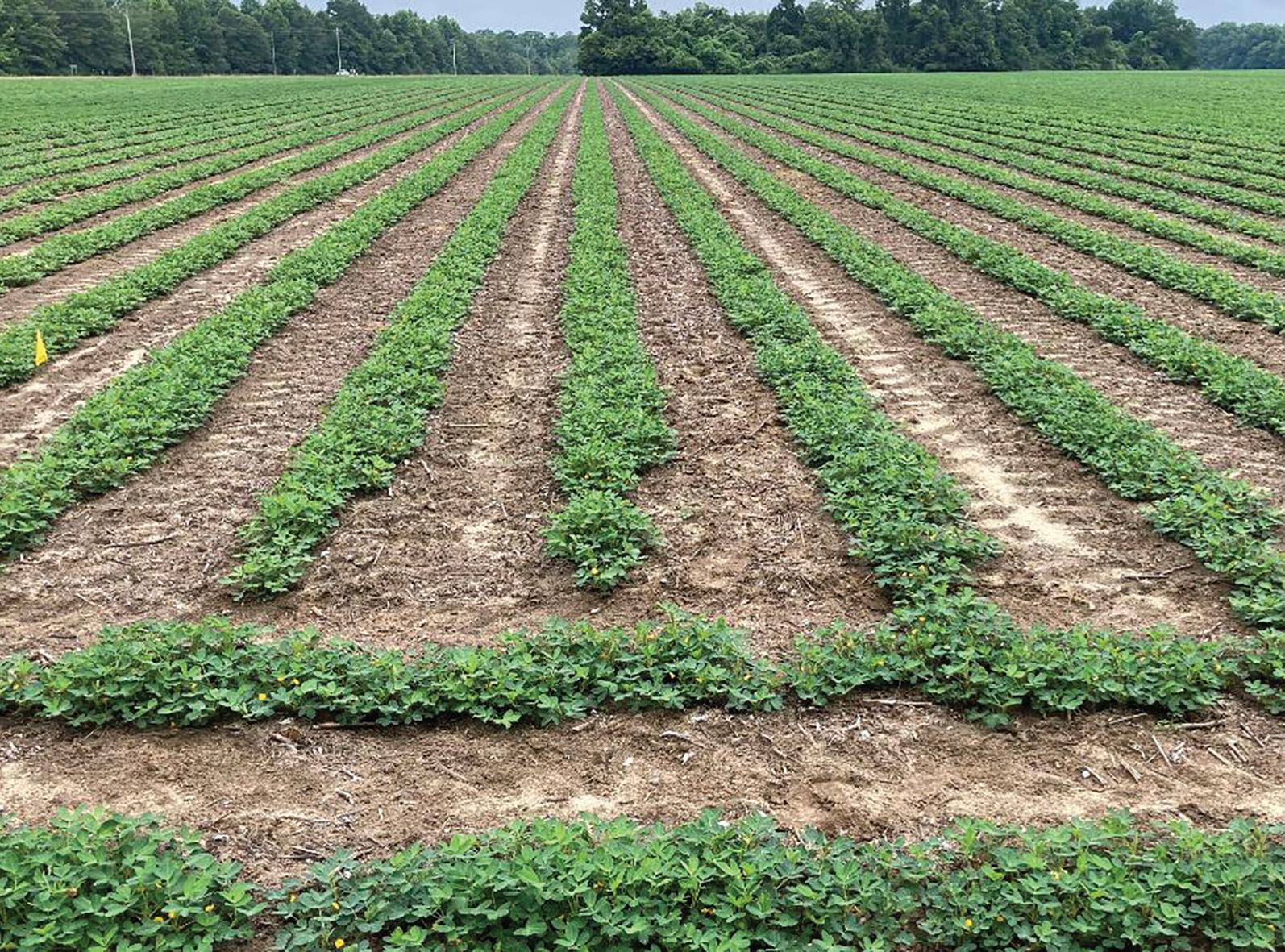
of aflatoxin.
Schedule That Works
Make End-Of-Season Disease Notes
A Good ‘Diesel Nut’
Skins: More Than Meets The Eye
Cover photo by Amanda Huber
NOVEMBER 2022 • THE PEANUT GROWER / 3TWITTER: @PEANUTGROWER 104
this issue is the history of peanuts. 5
A bottleneck in grading, trailer sampling, is the subject
a study this harvest. Volume 34 • Number 8
ONE GROWER THE PEANUT PRODUCER'SMARKETING & PRODUCTION MAGAZINE www.peanutgrower.com The Fight Against Aflatoxin Is On How Does This Farm Family Fight Disease? Work Begins On A High-Oil, Low-Carbon Variety Severe Drought, TSWV Are 2022 Headlines NOVEMBER 2022 Features 10
headlines
13
tackle the problem
16 A
is family farming operation uses premium disease protection and varietal resistance. 18
Harvest is an excellent time to evaluate many soilborne disease issues. 20 Developing
Texas A&M AgriLife researchers, in partnership with Chevron, aim to develop varieties for low-carbon fuel production. Departments Supplement Look for the Corn South supplement following page 12 in the Alabama, Florida, Georgia and Mississippi versions of e Peanut Grower. 2023 Hybrid Guide Supplement to Cotton Farming and The Peanut Grower Magazines Southern Production & Marketing Strategies 8 Market
Inflation, input costs weigh heavy on 2023 planning. NOVEMBER 2022 22 Peanut
What can be done with the millions of pounds of peanut skins?
Agronomist University of Georgia
Growers Cooperative Marketing Assn., Franklin, VA
Associate
University
Peanut Specialist
University
Editor’s Note


A Long And Storied History
Atheme running through this issue of The Peanut Grower is the history of peanuts.
Part of that history goes back to the 1900 Paris Exposition and the introduction of the diesel engine. Although Rudolf Diesel had used everything from crude oil to paraffin oil in his new engine, it was peanut oil running the engine at the World’s Fair during its debut.
Could we turn back the clock and use peanut oil as a fuel? On page 20, you can read about a research partnership between Texas A&M AgriLife and Chevron to develop higher-oil content peanut varieties as a potential renewable feedstock for diesel fuel with a lower carbon intensity.
Amanda Huber Editor, e Peanut Grower
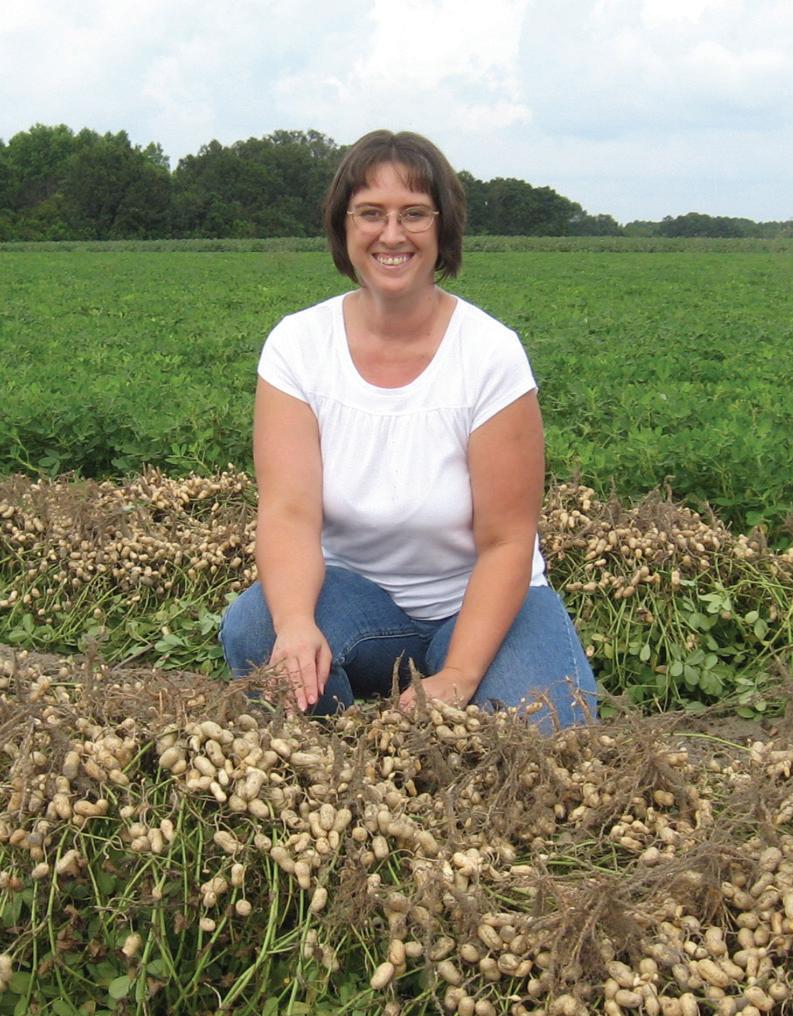
How is this possible? Well, that’s part of our peanut history as well. The researchers, including Texas A&M AgriLife professor emeritus Charles Simpson, will be combing through the wild germplasm, collected and maintained by Simpson, to find suitable varieties with the agronomic characteristics needed for production.
Multiple universities are working on a problem that has been plaguing our peanut industry for years, with 2019 being a significantly bad year. That problem is aflatoxin. Our history of aflatoxin means that U.S. peanuts are no longer the preferred origin in international markets. You may not be surprised what it costs the industry in a year with significant aflatoxin. You probably will be surprised at what it costs every year, even a very good quality year. Let’s hope this renewed focus will lead to breakthroughs to make aflatoxin history to the industry.
Speaking of history, it’s available if you find a need or would like to own a recounting of important events and market news. Tyron Spearman, The Peanut Grower’s marketing editor is also editor of Peanut Farm Market News, which is entering its 35th year. If you would like to own all 35 years’ worth of issues, more than 5,000 pages, it’s available on a jump drive.
Spearman, who was recently honored with an endowed scholarship that you can read about on page 7, says, “Our goal is to provide you and your company information about the U.S. peanut industry and the people who have made this industry grow and prosper. Thanks for subscribing and always thanks for your friendship and helpful information.”
in the USA.
The Peanut Grower (ISSN 1042-9379) is an agribusiness magazine for U.S. peanut producers. Published in eight monthly issues, January through July and November. Annual subscriptions are $40.00. Single Copy price is $5.00. Annual overseas subscriptions are $70.00, including Canada/Mexico. Periodicals postage paid at at Memphis, Tennessee, and at additional mailing o ices. Copyright © 2022 One Grower Publishing, LLC, all rights reserved except where otherwise noted. The Peanut Grower ® is a registered trademark, which reserves all rights granted by the U.S. Patent and Trademark O ice in association with the registration. POSTMASTER: SEND ADDRESS CHANGES TO OMEDA COMMUNICATIONS, CUSTOMER SERVICE DEPARTMENT, P.O. BOX 1388, NORTHBROOK, IL 60065-1388. All statements, including product claims, are those of the person or organization making the statement or claim. The publisher does not adopt any such statement or claim as its own, and any such statement or claim does not necessarily reflect the opinion of the publisher.
One
Publishing,
One Grower Publishing, LLC 875 W. Poplar Ave., Suite 23, Box 305 Collierville, TN 38017

Copies will be sold for $400 each. For information, contact Angela at spearmanagency@friendlycity.net.
Finally, page 18 is a reminder to make notes about your disease history this season for better planning next year. With that, I will see you again in 2023.
4 / THE PEANUT GROWER • NOVEMBER 2022 PEANUTGROWER.COM
Scott Monfort
Extension
Dell
Cotton
Peanut
Kris
Balkcom
Agri-Program
Auburn
Dan
Anco
Extension
Clemson
Emi Kimura
Extension
Agronomist
Texas
A&M University David Jordan Extension Agronomist
North
Carolina State University Glen Harris
Extension
Agronomist University of Georgia
Jason
Ferrell
Extension
Weed Specialist University of Florida
Printed
Grower
LLC, also publishes Cotton Farming, Rice Farming, Soybean South and Corn South EDITORIAL/PRODUCTION Editor Amanda Huber ahuber@onegrower.com Copy Editor Cassidy Nemec cnemec@onegrower.com Art Director Ashley Kumpe Digital Content Manager Katie Guthrie ADMINISTRATION Publisher/Vice President Lia Guthrie (901) 497-3689 lguthrie@onegrower.com Associate Publisher/Editor-In-Chief Carroll Smith (901) 326-4443 Associate Publisher/Sales Scott Emerson (386) 462-1532 semerson@onegrower.com Audience Services Kate Thomas (847) 559-7514 Production Manager David Boyd dboyd@onegrower.com For subscription changes or change of address, call (847) 559-7578 or email peanutgrower@omeda.com
Mike Lamensdorf
PRESIDENT/TREASURER Lia Guthrie PUBLISHER/VICE PRESIDENT EDITORIAL ADVISORY BOARD ONE GROWER PUBLISHING, LLC
News Briefs
2022 U.S. Peanut Crop
Peanut production is forecast at 5.85 million pounds or 2.9 million tons in 2022, down 6% from the previous estimate and down 8% from 2021. USDA made this prediction in September.
Planted area at 1.46 million acres is down 5% from the previous estimate and down 8% from 2021 planted area. Area harvested is expected to total 1.41 million acres, down 6% from the previous forecast and down 9% from 2021.
Based on conditions as of Sept.1, the average yield for the United States is forecast at 4,145 pounds per acre, up 16 pounds from the previous forecast and up 10 pounds per acre from 2021. Record-high yields are forecast for Florida, North Carolina, South Carolina and Virginia. On Sept. 4, 70% of the U.S. peanut acreage was rated in good to excellent condition, compared to 74% the same time last year.
Primary Elections Could Slow The Farm Bill
U.S. Congressman Glenn “GT” Thompson, R-Pa. recently told a farm group that he’s ready to get back to work to accomplish an on-time Farm Bill in 2023. He also believes the Farm Bill is the one piece of legislation most likely to move in 2023, which also brings the opportunity to provide greater oversight of USDA. The current Farm Bill expires Sept. 30, 2023.
The No. 1 thing Thompson says he’s hearing from farmers is the frustration with high input costs, including fuel and fertilizer. He understands that farming is a business, and despite higher commodity prices, farmers are still searching for ways to remain profitable.
Thompson says the House Agriculture Committee is two and a half years behind on legislative oversight of the last Farm Bill. In 2018, a total of 130 field hearings had been held. To date, not one bipartisan field hearing has been held, although there have been seven field hearings hosted by
Democrats. If the House changes to Republican control after the 2022 election, Thompson says there will be a change in intensity of getting out into the states to hear firsthand from farmers and agricultural stakeholders what changes should be made.
Farmer-Stock Probe Pattern Study
The frequency of using semi-trailers for drying has dramatically increased since their introduction in the Southwest production area. According to buying point owners/operators, most say that more than 75% of their tonnage is dried on semi-drying trailers. Current sampling methods call for probing a load of farmer-stock peanuts greater than 10 tons 15 times using approved patterns. One of bottlenecks in the grading process is getting a representative sample from the conveyance.
A research study on this issue is being conducted by researchers at the USDA National Peanut Lab in Dawson, Georgia. Agricultural engineer, Chris Butts, along with Quentin Read, Joseph McIntyre and research director Marshall Lamb will work with the USDA Agriculture Marketing Service and the Federal-State Inspection Service.
The thought is that the increased use of high-capacity dump carts during harvest means that peanuts are more thoroughly mixed when dumped into the semi-drying trailers in the field, reducing the variability. Therefore, the number of probes required to obtain a representative sample could be reduced from 15. The study will be conducted using flat bottom trailers greater than 10 tons.
Measuring Peanut In-Shell Moisture At e Start
Over the past several years, Clint Faircloth, project manager with Georgia Federal-State Inspection Service, has led an effort to develop a device that measures the moisture of peanuts in the shell. It has proven to be a challenge to
In Brief

• Production is expected down 8% from 2021.
• No bipartisan Farm Bill field hearings held to date; expectations remain to finish it in 2023.
• Probing sample frequency, inshell moisture content being studied this harvest.
• APC envoy presents evidence for the UK to maintain inspection rate.
• Georgia Peanut Farm Show set for Jan. 19.
find the right company to finalize the research and manufacture a device that is reliable and accurate. However, it was accomplished and two devices are being tested during the 2022 peanut season.
The first uses microwave technology patented and licensed by USDA Agriculture Research Service to measure in-shell moisture content. The technology was patented some years ago, but the road to commercialization has been bumpy. The manufacturer will continue making modifications during and following the harvest based on data and user feedback.
The second meter is commercially available and has been used for several commodities including almonds, pistachios, pecans and walnuts. It uses an approximate 40-gram sample, and work has been under way to calibrate it for use on peanuts. Again, data is being collected during the 2022 harvest to determine its accuracy.
UK Asked To Maintain Current Inspection Rate
Last April, the United Kingdom’s Food Safety Agency proposed raising the inspection level for aflatoxin in U.S. peanuts and peanut products from 10% to 20%, looking to follow

NOVEMBER 2022 • THE PEANUT GROWER / 5TWITTER: @PEANUTGROWER
News Briefs

what the European Union did on Jan. 1, 2022. The American Peanut Council, with support from the UK Nut and Dried Fruit Trade Association and the USDA, submitted detailed information in response arguing that data for the UK market was insufficient to support an increased testing rate.

APC’s direct engagement with the FSA, including a trip by an APC delegation to London Gateway port in mid-July, positively influenced the FSA’s decision not to increase the inspection rates for U.S. peanuts at this time. This is still a draft regulation, but it is expected to be finalized as is.
In the same proposal in April, the UK FSA proposed increasing aflatoxin inspections of peanuts from India to 50%, and to maintain the current aflatoxin inspection rates of 10% for Chinese and Brazilian peanuts, while moving both from Annex 2 to Annex 1. The UK FSA has proposed imposing a rate of inspection for pesticide residues for imports of Brazilian peanuts at 20%, which is also in line with EU testing rates.
Annex 2 is for countries/products placed under special conditions governing entry in the EU while Annex 1 is for temporary increase of official controls at Border Controls Posts. Initially, Annex 1 is used when products are seen as emerging risks, and they move up to Annex 2 when they are seen as permanent risks to be monitored closely. Products are moved from Annex 2 to Annex 1 when it has been shown that the risks are now much lower for that product.
Peanut Proud Helping Hurricane Victims
Peanut Proud, the humanitarian arm of the peanut industry, recently ordered two truckloads of peanut butter for delivery to Southwest Florida and areas hit by Hurricane Ian. The peanut butter will be distributed by the Harry Chapin Food Bank. Two additional truckloads will be delivered in early November.
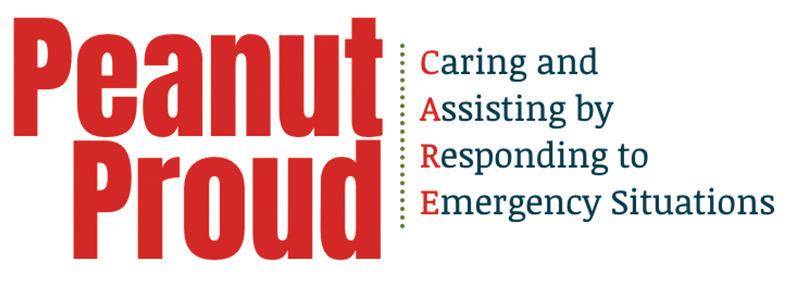
Contributions to the victims of Hurricane Ian are welcomed. The peanut butter is processed by Tara Foods in Albany, Georgia, and is made possible by donations from all segments of the peanut industry, plus individuals and organizations.
Donations can be made to Peanut Proud at P.O. Box 446, Blakely, GA 39823, or using their website at www. peanutproud.com
Mexico’s Peanut Market
Victor Galindo, CEO of Galdisa, a food company based in Mexico, was the featured speaker at the peanut buying points pre-harvest meeting, and he presented updated facts about Mexico and the peanut market. The population of Mexico is now more than 130 million, and it’s the 11th largest economy by gross domestic product.
Mexican peanut demand totals an estimated 219,000 metric tons with peanut production estimated at 65,000 metric tons. Imports in 2021 were 154,000 metric tons with a value of $189 million U.S. dollars.
Galdisa is the largest importer of peanuts in Mexico. The family-owned business has 60 years’ experience in the peanut industry with more than 400 employees. The company has five facilities in Mexico and the U.S. with three business divisions including distribution, snacks and ingredients.
Imports into Mexico of shelled peanuts totaled 150,974 metric tons in 2021. A total of 87% were U.S. peanuts, 8.43% from Nicaragua, 2.49% from China, 1.42% from Brazil and .23% from Argentina. In-shell imports in 2021 showed 68.42% imported from China and 31.58% from the United States.
Victor said that the United States had some non-price advantages that helped
imports to Mexico. Being a member of US-Mexico-Canada agreement is a positive. Also, transit times are about two weeks over the road with no ships, plus Mexico is easy to travel to and the U.S. industry is providing some marketing support in cooperation with the American Peanut Council.
Georgia Peanut Farm Show Set
The 46th annual Georgia Peanut Farm Show and Conference is scheduled for Jan. 19, 2023, from 8 a.m. to 2:30 p.m. at the University of Georgia Tifton Campus Conference Center in Tifton, Georgia. The one-day show is free and open to all farmers and industry representatives.
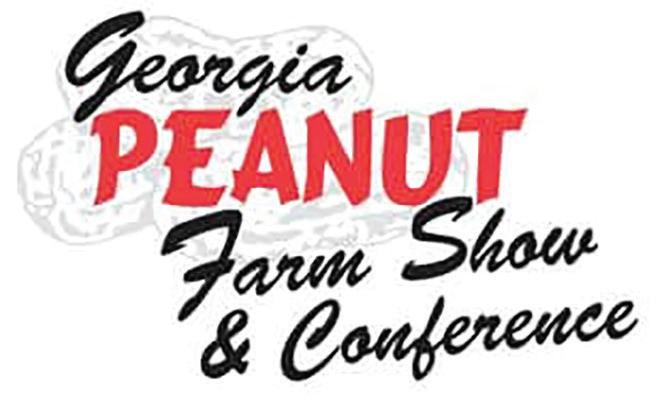
Attendees will have the opportunity to visit with nearly 100 agribusinesses and organizations in the peanut and agricultural industry. Farmers can earn private and commercial pesticide applicator certification, as well as learn about cutting-edge research and developments during the University of Georgia Peanut Production Seminar and industry-wide sponsored Peanut Seed Seminar.
Farm Show chairman Rodney Dawson says, “I encourage farmers to attend this one-day show in Tifton. The knowledge they will gain from industry representatives and seminars is an investment in the future of their farm.”
The Georgia Peanut Commission, in cooperation with OneBlood, will host a blood drive from 9:30 a.m. to 2:30 p.m. At the close of the program, there will be nearly $10,000 in door prizes presented to farmers, as well as a grand door prize.
For more information, go to www. gapeanuts.com
6 / THE PEANUT GROWER • NOVEMBER 2022 PEANUTGROWER.COM
News Briefs

Spearman Honored With Endowed Scholarship
At the recent National Peanut Buying Points Association pre-harvest meeting, Robin Singletary, education committee chairman, presented Tyron Spearman with a University of Georgia Certificate of Gratitude that read:
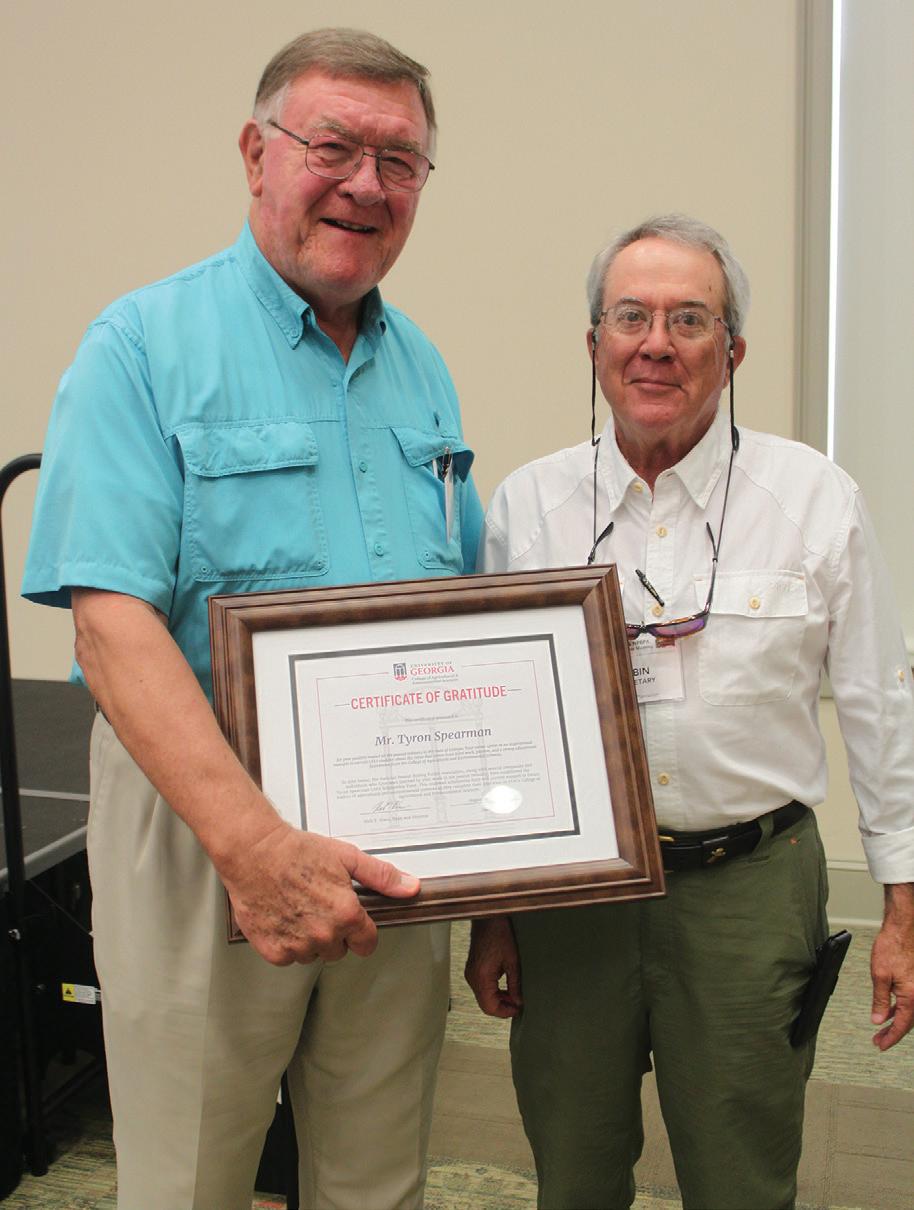
“A Certificate of Gratitude is presented for your positive impact on the peanut industry in the State of Georgia. Your career serves as an inspirational example to current students about the value that comes from hard work, passion and a strong educational foundation from the College of Agriculture and Environmental Sciences.
“In your honor, The National Peanut Buying Points Association, along with companies and individuals who have been touched by your work in the peanut industry, has established the Tyron Spearman CAES Scholarship Fund. This endowed scholarship will provide support to future leaders of agricultural and environmental sciences as they complete their education in UGA’s Agricultural and Environmental Sciences.”
Recognizing A Lifetime Of Work
Singletary reported that already $50,000 had been pledged to the fund and the National Peanut Buying Point Association committed $5,000 annually in support of a freshman agricultural scholarship at Abraham Baldwin Agricultural College and a junior scholarship at the University of Georgia College of Agriculture and Environmental Sciences. Guidelines will be developed by the Scholarship Committee and Spearman.
Spearman was almost speechless as he responded to the astonishing announcement.
“It was an absolute surprise, and I am appreciative to the leaders of the peanut industry who made this recognition possible. This is a great industry, and it has been my honor to serve the peanut family and consumers, who enjoy our nutritious product.”
Spearman is executive director of the National Peanut Buying Points Association. He is probably best known as editor of the Peanut Farm Market News and marketing editor of The Peanut Grower Magazine, which is mailed to more than 8,000 peanut farmers. Spearman was inducted in the Peanut Hall of Fame in 2013, which is the highest honor presented in the American peanut industry.
Spearman is president of the Spearman Marketing and Advertising Company which coordinates marketing budgets and programs for agricultural companies, associations, museums and festivals and events in the Southeast. You can hear his voice daily on the Southeast

Ag Net Farm News with updates on the peanut market and what’s happening in the world of peanuts. He is also the coordinator for the Tifton-Tift County Tourism Association.
A Tireless Peanut Promoter
His long peanut history includes serving 10 years as executive secretary of the Georgia Peanut Commission and helped initiate the American Peanut Council’s export promotion program back in 1978. He has visited 12 countries promoting peanuts and is a two-time chairman of the board of directors of the American Peanut Council.
Singletary said, “Tyron has certainly done a lot and contributed a lot to the U.S. peanut industry, but I think his biggest accomplishment is his never-ending optimism and love of our industry. He never stops promoting peanuts wherever he goes, and what would this industry do without his emcee skills, booming voice and infectious optimism about peanuts and the potential of our industry?”
Persons interested in supporting the scholarship fund should contact Angela Elder at spearmanagency@friendly city.net.
NOVEMBER 2022 • THE PEANUT GROWER / 7TWITTER: @PEANUTGROWER
Market
Midway
through the 2022 peanut harvest, farmers are disappointed and worried about the future.

Tomato Spotted Wilt Virus was more prevalent this season than in the past decade. Rains were feast or famine in many areas, and at one point, harvest of dryland acres had almost shutdown until it rained.
The worry is how much this crop will cost and if there will be a profit when it’s over. Disease and insect pressure are present. Lower-than-expected grades and reduced yields chip away at any profits.
Market Movement

Although the U.S. peanut market remains relatively quiet, farmer stock offers jumped to $600 per ton for uncontracted tonnage. Most farmers had settled for $500 to $550 per ton in the spring as financial lenders wanted something on the books. The VirginiaCarolina region had supported $600 to $625 per ton early on.
Price Loss Coverage payments are made when the market year average is below the reference price. Payments are made in October. The market year average is based on the average prices paid to farmers for the past year (Aug. 2021 to July 2022). The peanut market year average for this period was 24 cents per pound or $486 per ton.
The effective reference price for peanut is 27 cents per pound or $535 per ton. The higher of the loan rate (18 cents per pound or $355 per ton) or market price average ($486 per ton) is deducted from the reference price ($575 per ton). This equals a PLC payment of $49 per ton. This payment is applied to 85% of the peanut farm base. The U.S. Department of Agriculture Farm Service Agency will
have verified prices and begun making a payment to farmers last month.
Production
USDA estimated the crop at 2.9 million tons in 2022, down 6% from the previous forecast and down 8% from 2021. Planted area at 1.46 million acres is down 8% from 2021. Area harvested is expected to total 1.41 million acres, down 6% from the previous forecast and down 9% from 2021.

Total average yield across the United States is forecast at 4,145 pounds per acre, up 16 pounds per acre from the previous forecast and up 10 pounds per acre from 2021. Record-high yields are forecast in Florida, North Carolina, South Carolina and Virginia. These estimates were made in September before Hurricane Ian and, therefore, could be lower in October.
The year-long drought in the Southwest will increase abandoned acres, plus officials estimate that at least 40% of the Texas crop will see a big yield loss. Virginia has hit a dry spell just before harvest. Nationwide, drought has affected much of the 2022 crop.
Domestic Markets
Peanut usage for the 12-month period from August 2021 to July 2022 is down only 0.6%. Peanut butter dropped 4.2% for July and is down 2.7% for the year. Candy was up 13.1% for the year, while snack peanuts showed a 4% decrease.
The National Peanut Board tracks consumer trends and reports that taste, price and familiarity continue to drive consumer purchases. Another trend is consumers’ concern regarding their individual food and beverage choices impact on the environment. How the food impacts their health is still important, and snacking throughout the day has been an increasing habit. Peanuts and peanut butter are winners in these trends.
Export Markets
9.3%
thru July 2022. Mexico and Canada continue to make major purchases. China’s purchases have declined during this period by 45% compared to last year. For other nations, the buying trend is good. During this seven-month
compared to the same time
8 / THE PEANUT GROWER • NOVEMBER 2022 PEANUTGROWER.COM
Peanut exports are down
January
stretch and
J. Tyron Spearman
Contributing Editor, e Peanut Grower
Inflation, Input Costs Weigh Heavy On 2023 Planning Leading Marketing Indicators (As of Oct. 6, 2022) 2022 Est. Acreage (– 7.9%) ...............................................1,447,265 acres 2022 Est. Production (–7.7%) ...............................................2,947,000 tons 2022 Market Loan Total .......................................................2,568,453 tons 2022 Redeemed From Loan...............................................2,423,875 tons 2022 Remaining In Loan ........................................................144,578 tons 2021-22 Domestic Usage (12 Mo.) ................................................. – 0.6 % 2021-22 Exports (7 Mo.) ................................................................. – 9.26 % NATIONAL POSTED PRICE (per ton) Runners -$424.68; Spanish - $413.41; Valencia and Virginias - $428.31
Watch
Market Watch

one year ago, major buyers include The Netherlands (up 17%), Germany (up 53%), Japan (up 23%) and South Korea (up 75%).
The Chinese are buying from Argentina and Brazil for oil production. Prices for raw-shelled peanuts keeps inching higher. Chinese production has been hit with extreme weather, and the result on this market is unknown. Harvest in China
occurs about the same time as in the United States.
Argentine prices are higher amid a reduction in acreage and because of drought. Brazil’s peanut production is growing and becoming a major player.
Looking Ahead
What about plans for peanuts in 2023? With cotton and corn at record
levels last season, farmers were willing to delay some contracting and take that risk. It paid off this time with higher contract offers later. Production costs and inflation will influence farmers decisions on which crop to plant next season. With acreage cut 8% and fewer peanuts produced plus higher costs of inputs, the market for peanuts next season is anyone’s guess. PG
Are We Missing An Opportunity On Peanut Oil?
Ibelieve
the peanut industry has a unique opportunity to participate more fully in the peanut oil market. We are saddled with a carryout of almost 1.2 million tons versus production of 3.1 million tons or 38% of production. Meanwhile, we are importing the equivalent of about 40,000 farmer-stock tons of peanut oil. Something’s wrong with this picture.
We are also struggling to hold onto China as a major export market. In 2020, we exported over 800,000 FST of peanuts, 389,000 tons of that to China. USDA projects we will only export 600,000 tons this year and 625,000 tons next year. Based on shipments, we will be fortunate if China buys 125,000 tons in 2022. I believe if we had more peanuts suitable for oil production, China would be at our doorstep.
Why Dedicate A Portion Of Production To Peanut Oil?
The United States consistently grows 3 million tons or larger crops. Unfortunately, it’s difficult to consistently find markets. We need to look at how to balance production with what markets are looking for, whether it is edible or for crushing to produce oil and meal, domestically and internationally. That may mean producing fewer edible peanuts and more for oil.

There is demand at home for peanut oil, as well as in international markets, such as China and one day, India. However, to make it work, we must address inefficiencies that make it hard to compete with other peanut oil origins; and tap into genetics to produce varieties with higher oil content suited especially for oil.
U.S. Participation In Peanut Oil Markets
Global production of peanuts runs approximately 50 million metric tons per year. The USDA’s Foreign Ag Service’s World Oilseeds Report predicts 50.5 MMT of production this year. The report shows the world crushes about 20 MMT of peanuts for oil each year, which is slightly less than 40%, and produces 6.29 MMT of oil per year. In recent years, the U.S. has produced about 5% of the world’s peanuts, yet we have averaged only 1.8% or 115,599 metric tons of oil production. We are not servicing an important market at home and internationally.
Our best export year was 2020 at 805,000 FST. Because of the poor-quality crop in 2019, shellers had low-quality peanuts to sell. China bought 389,000 FST to meet their oil need. The 2021 crop will be reserved for edible use. These peanuts are too expensive for China to use as oil, and they will look elsewhere.
In Summary
The U.S. peanut market is extremely mature; 94% of American homes have at least one jar of peanut butter. Only modest rates of growth come from record levels of per capita consumption. Without significant exports, we do not have demand to justify growing 3-million-ton crops yearly. Segmenting part of our production to peanut oil would allow us to supply our domestic needs and make us more competitive in the international market.
The numbers must work for all parties. Efficiencies can be achieved in growing, handling and processing to make it feasible. To do so requires some bold steps and innovative thinking from farmers, breeders, economists, engineers and processors.
Article by Bob Parker, President & CEO at National Peanut Board. For the complete article, go to https://www.linkedin.com/ pulse/us-peanut-industry-missing-opportunity-oil-bob-parker/

NOVEMBER 2022 • THE PEANUT GROWER / 9TWITTER: @PEANUTGROWER
2022 Crop Recap
Severe drought and significant pressure from Tomato Spotted Wilt Virus are headlines of this season.
By Amanda Huber
Bymid-October, the U.S. Department of Agriculture’s National Agricultural Statistics Service rated the total U.S. peanut crop as 8% excellent and 55% good. However, the rating of 6% poor was greater than the week prior and the same time the previous year. At that time, 43% had been harvested, which was an increase from the fiveyear average of 39%.
In Georgia, acreage was down in 2022.
“In 2021, we grew 748,000 acres,” says Scott Monfort, University of Georgia Extension peanut specialist. “This past year, there was a drop of about 70,000 acres, so we are down in acres in this state as well as other states.”

Production is expected to be reduced as well.
Monfort says in Georgia, it was an above-average year for rainfall, although the state is about 55% irrigated.
“Most of the dryland crop looks good because of the amount of rainfall we got this year. We’ve had dry spells, too. June was a record for us with dry and hot conditions — over three weeks at 95 degrees, some days over 100 degrees with no rain. That hurt the dryland crop initially. Luckily, it was not too far into the growing season, and we were not heavily blooming yet.
“For the most part, I think we’re in a very good yield potential year. Not a bumper crop, but good yield and quality.”
The biggest and most concerning problem this season, says Monfort, was the amount of Tomato Spotted Wilt Virus.
“This is one of the worst years we’ve seen in 10 plus years. We’ll be down in yield in heavily affected fields,” he says. “Some of the worst fields were planted very early when the risk index shows it will be a problem.”
Overall, Monfort estimated the average yield would be around 4,300 pounds per acre. “Price was good, but inputs were triple what they should be, taking away any possible profit.”
Rain Ahead Of Cool Weather In North Carolina
Hurricane Ian hit the Virginia-Carolina region about harvest time, and if not actual harvest, then harvest decisions were being made.
North Carolina State University peanut Extension specialist David Jordan says, “By the last week of September, approximately 40% of the peanut crop was dug in the Virginia-Carolina region with 15% threshed. As Hurricane Ian approached, many growers were deciding whether peanuts would be more protected if they were not dug or if the threat of heavy rains would cause
greater risk to peanuts if soils dried out slowly.”
Jordan says the threat of additional rainfall and cooler temperatures made decisions especially challenging.
“Water-soaked soils and cloudy weather can also slow the pace of maturation, and this could be the case relative to Hurricane Ian. However, some rain was needed across the region to enable digging of pods and inversion of vines without substantial pod loss.”
Overall, Jordan says planting estimates for the region was 110,000 acres, 26,000 acres and 77,000 acres for North Carolina, South Carolina and Virginia, respectively.
“Yield potential has been decreased across the region from the previous report of 4,000 pounds per acre to 3,900 pounds per acre, primarily because of a relatively widespread drought in late-August and throughout much of September.”
10 / THE PEANUT GROWER • NOVEMBER 2022 PEANUTGROWER.COM
Pressure from Tomato Spotted Wilt Virus was the worst it has been in more than a decade, says UGA Extension peanut specialist Scott Monfort. “Yield will be down in heavily affected fields.”
Jordan says a new tool, The Frost Advisory, developed by the North Carolina State Climate Office and supported financially by the North Carolina Peanut Growers Association and the Virginia Peanut Growers Association, will be a valuable resource for producers.
“This is a great service to the peanut industry and will be a very useful tool as we move into the remainder of the season with a percentage of the crop remaining in the field to be dug and harvested,” he says.
Cool Temperatures A Risk In Arkansas, Too
When peanut harvest began in Arkansas, grades were in the lows 60s, says University of Arkansas Division of Agriculture Extension plant pathologist Travis Faske.
“A few fields have been thrashed, and grades started in the low 60s due to the number of immature pods,” Faske says. “The proportion of immature pods is due to the hot summer temperatures that caused flowering to stop and thus delayed pod set. This resulted in an early and late pod set.”
For farmers, he says the challenge is to wait long enough to allow immature pods to mature without losing the early pods.
“To complicate the situation,” Faske says, “Cooler fall temperatures slow pod maturity. As harvest is delayed, the risk of freeze injury increases.
“Pod injury occurs when peanuts are dug a day or two before morning temperatures dip below freezing or 27 to 31 degrees F for a few hours. After a few days, kernels with freeze injury can be detected. Injured kernels are darker in color than non-injured kernels and often have a shriveled testa,” he says. “A light frost is not a major issue.”
More Peanuts In Missouri
Peanuts continue to take root in Missouri says University of
Missouri Extension soils and cropping systems specialist Justin Calhoun.
In 2022, Calhoun estimates there may be more than 15,000 acres of peanuts in the Bootheel region.
“Some of this new interest comes from the formation of the Missouri Peanut Growers Association, which has funded multiple projects this year to promote the state as a major peanut producer,” he says.
Calhoun oversees three checkoff-funded research projects this year at the MU’s Fisher Delta Research Center in Portageville. He also says most peanut fields will average around 5,000 pounds per acre.
Severe Drought Mars Texas Crop
The one state suffering most significantly on the USDA NASS peanut condition report was Texas. Only 1% of the state’s peanut crop was rated excellent, while 30% was good, 50% was fair, 15% was poor and 4% was very poor.
Yields will be below average because peanuts were affected by drought and heat like most crops across the state, says Emi Kimura, AgriLife Extension state peanut specialist.

Texas peanut production is reliant on supplemental irrigation, and water capacities vary from operation to operation. Kimura says low soil moisture, low humidity, extreme heat and windy conditions made it difficult for irrigation to meet crop demand.
Some fields that received around-the-clock irrigation looked good but will likely produce below-average yields, while others with limited water capacity failed or were expecting very poor yields, she says.
Aside from the drought, Kimura says producers faced few issues. “Pest, disease and weed pressure were below average due to the arid conditions, though weeds were becoming an issue in some fields following widespread rainfall,” she says.
NOVEMBER 2022 • THE PEANUT GROWER / 11TWITTER: @PEANUTGROWER
This peanut profile board shows an example of late (left) and early (right) pod maturity. The dark pods are ready to harvest.
COURTESY OF LES GOODSON
“The peanut season started off dry, hot and windy, and those conditions were consistent until late-August,” she says. “It has been a tough season.”
Texas peanut producers planted around 170,000 acres, Kimura says. The reduced acreage was likely due to the drought outlook, higher input costs and commodity price competition from other crops like corn and cotton. Peanut producers typically plant between 180,000 to 190,000 acres annually.

The latest USDA Farm Service Agency report estimates nearly 20,000 acres failed. Fields that survived the drought were not progressing properly under difficult conditions.
Kimura says peanut pods were not filling properly and some were empty, which will mean further reduced yields.
Oklahoma Crop Mostly Good
In early October, David Nowlin, Oklahoma Peanut Commission field specialist, says peanut harvest was getting underway in the state.
“The five-day rainfall totals gave us some much-needed moisture but has slowed peanut harvest in several areas.”
Nowlin says conditions the month prior were just right for southern blight (Sclerotium rolfsii).
“Most fields were caught up on their irrigation — providing wet soils, a little more humidity and warm soil temperatures ideal for Southern Blight.”
With most of the crop rating good (77%) and fair (23%), producers in the Sooner State are faring better than their southern neighbor.
A Good Year In Most Of Alabama
Alabama producers were keeping one eye on the Gulf of Mexico because of recent history but thus far had managed to have the greatest percentage of crop conditions ranking excellent at 16%.
“Hopefully the tropics will remain quiet, and weather will be favorable for harvest and late-season management deci-
sions,” says John Vanderford, regional Extension agent with the Alabama Cooperative Extension Service, in the mid-September row crop report.
“Peanuts are continuing to look good in the area, and final fungicide applications have happened in many fields. The west central pod blast found several producers still a week to two weeks out from digging,” he says.
The remainder of Alabama’s crop was 75% good, 8% fair and only 1% poor. PG

12 / THE PEANUT GROWER • NOVEMBER 2022 PEANUTGROWER.COM
Alabama’s peanut crop sported a double-digit excellent rating according to USDA NASS’s mid-October report.
ALABAMA COOPERATIVE EXTENSION
Texas peanut production experienced a rough 2022 because of widespread drought.
MADISON CARTWRIGHT/ TEXAS A&M AGRILIFE RESEARCH
The Fight Is On
The 2019 crop was a ‘line in the sand.’ Since then, substantial focus and funding has spurred the peanut industry on to solve the aflatoxin riddle.
By Amanda Huber
For two days in late November 2021, representatives from all segments of the peanut industry met in Tifton, Georgia, for the U.S. Peanut Quality Symposium. What drove the effort was the well-documented, aflatoxin-heavy crop of 2019.

The symposium was the start of a more-coordinated research effort and a fleshing out of priorities to move the needle on a problem that has plagued the U.S. peanut industry for decades. Adding to this is funding from the U.S. Congress in an effort led by Rep. Sanford Bishop through the Agriculture Appropriations Committee.
Undoubtably, the amount of aflatoxin in the 2019 crop was the result of a perfect storm of conditions, and the problem is usually not as significant. That it cost the industry a great deal for that year is not surprising. But what it costs every year, according to U.S. Department of Agriculture National Peanut Research Lab research leader Marshall Lamb, is surprising.
Millions Spent On Aflatoxin Every Year
The USDA National Peanut Research Lab conducted a double blind, confidential survey of all peanut processors, which included manufacturer and farmer data. The survey on the cost of aflatoxin accounted for 72% of all U.S. peanut production for that period, Lamb says, offering a robust data set.
“In 2019, the worst year we have had for aflatoxin, 30% of all shelled lots were being rejected at the shelling plants, even though we had very few Seg. 3s that year. It cost the industry $126 million, which is $91 per acre and $46 to $47 per ton,” Lamb says.
What about a good year?
“Looking at one of the cleanest years, 2021, aflatoxin still cost $58 million, or $32 per acre, which is $16 per ton,” he says. “We have a great year, and we are still spending $58 million on aflatoxin?
“This is something we need to get a handle on because it’s squeezing margins for the industry,” Lamb says. “The industry incurs these costs every year to put out the best quality peanut in the world. We need to reduce these costs and be more competitive on the world market.”
Lost Markets And Margins
Premium Peanut CEO Karl Zimmer says the export market is critical to the
U.S. peanut industry simply because we produce more peanuts than we consume. Domestic demand has grown about 1% a year, he says, but that leaves almost a million tons that need a home. But can we supply what these markets demand?
“Our customers want reliability,” Zimmer says. “They must be able to count on the United States as an origin to give them product year in and year out, and the data shows they cannot rely on us. That’s the reality of what we’re faced with today.”
Zimmer says very few customers would accept a 15 parts per billion lot of peanuts. In fact, 71% of the United States’ customers have requirements less than 10 parts per billion.
NOVEMBER 2022 • THE PEANUT GROWER / 13TWITTER: @PEANUTGROWER
“Japan wants zero, and they test 100% of the product that comes into their country. Europe tests 20%, and they want less than four parts per billion.
“In a bad year, we can’t meet the edible market on 15% to 30% of the crop,” he says.
“Think about 30 million peanut kernels in a truck. All you need is one kernel out of 30 million to have aflatoxin, and you’ll have failed these standards. One kernel out of 30 million is enough to fail these standards. That is the magnitude of the challenge we have.

“This has driven the notion that U.S. peanuts are no longer the preferred source, internationally. If you look at market share in key international markets like Europe, the United Kingdom and Japan, the trend is not positive,” Zimmer says. “They are going to buy from origins that consistently and reliably supply them product. Based on our history of aflatoxin, the United States does not have that capability today.”
Like Lamb and others who participated in the quality symposium, Zimmer is confident this is a challenge that the industry will meet.
“That’s why we are spending time, energy and passion to try to solve this issue, because it will help the economics and help in that export market,” he says. “Those are the markets we need to find a home for a million tons a year if we want a successful, vibrant industry.”
Opening The Fight On Many Fronts Research projects will address the aflatoxin problem on several fronts.
University of Georgia assistant professor in mycotoxicology and postharvest pathology Jake Fountain’s primary focus is on the mitigation of aflatoxin contamination in peanuts and corn. His
How Will We Fight Aflatoxin?
• Improve risk prediction and communication.
• Re-examine and improve harvesting, drying and storage methods.
• Using and optimizing non-destructive, high-throughput sensing methods.
• Use and develop biocontrol and chemical strategies.
• Develop new, more resistant varieties using cutting-edge genetic information.
• Learn more about the biology of Aspergillus
• Take what we know and apply it with biotechnology methods.
PEANUTGROWER.COM
Research
work will encompass using comparative genomics to identify novel aflatoxin regulatory genes; developing new biocontrol and biotechnology-based approaches of preventing aflatoxin contamination; and exploring the interactions between A. flavus and its hosts to find new resistance mechanisms.
Fountain says with pre- and post-harvest practices, the emphasis should be on carryover.
“We need to focus on pre-harvest infections in the field. Irrigation is our primary tool, but what else can we do? Some of the main areas we need to look at are things related to detection and risk, managing pests and the use of fungicides,” he says. “Right now, we do not have any effective strategies for using fungicides to help with aflatoxin issues, and I think there is grounds for research in that area.
“This year, as much rain as we had, how much moisture is going into the system and how do we deal with that? What else can we do with sensors? I think this is going to be an area we can look at to help optimize things we are already doing to make it more effective in reducing aflatoxin in the field and buying point.
The U.S. House of Representatives has approved the Agriculture, Rural Development and Food and Drug Administration appropriations legislation for fiscal year 2023. Included in the bill were peanut research provisions proposed by Agriculture Subcommittee Chairman Sanford Bishop (D-GA) and supported by the peanut industry.
These U.S. Peanut Federation-supported research initiatives, aflatoxin and nutrition, are currently in their second year of funding. Total funding for 2023 is $4 million for aflatoxin research at the U.S. Department of Agriculture’s Peanut Research Laboratory in Dawson, Georgia, and $1.5 million for the USDA Agricultural Research Service to work on nutrition priorities.
Aflatoxin Research—The Committee provides an additional $1 million above the 2022 level to support research activities to mitigate aflatoxin contamination in peanuts. The Committee directs ARS to enhance ongoing collaborations with land grant institutions to further advance research efforts.
Nutrition Research—The Committee recognizes the need for more research to identify how peanut consumption contributes to overall health, wellness and reduces chronic disease risk in various groups and across the lifespan. The Committee encourages research topics to include chronic diseases, nutrition and wellness across the lifespan, health disparities, dietary patterns for optimal health and nutrition for the future. The Committee provides an increase of $1 million to continue this peanut nutrition research.
The U.S. Senate has not approved their version of the Agriculture Appropriations bill to date. The Congress has passed a fiscal year 2023 continuing resolution that expires Dec. 16, 2022.
Fountain says another area of research is on A. flavus, itself.
“Why does this fungus make aflatoxin? We don’t completely understand that. How does it infect peanuts? How does it interact with other organisms? There is a lot we do not know that we still need to learn,” he says.
A Problem To Solve Together
Fountain brought up the biological control, Aflaguard, that was tried by the industry had little success.
“I think there is room to revisit this and optimize it. Can we improve it by looking at different application methods, different blends of products, even looking at new organisms, new predators that could have some success in peanuts?” he says.
“We need to improve our sampling and detection methodologies,” Fountain says. “Right now, we are relying on chemical detection methods, which are accurate, but time consuming, expensive and destroys the samples you are measuring.”

Part of the aflatoxin research will be exploring non-destructive sampling methods.
“Potentially, hyperspectral imaging could help visualize where aflatoxin may be to larger scale sorters, which would be more useful to the industry,” he says.
Yet another tool will be genetic markers and a new generation of peanut breeding.
“We’re developing reference genomes for the Aspergillus spp. We’re even working on the pangenome to incorporate the genetic information of hundreds of different isolates of Aspergillus . If you can understand the enemy, you have a better chance of developing defenses against it,” Fountain says.
Finally, because of the resistance to genetically modified crops, non-GMO biotech methods, such as ribonucleic acid interference and nano-particle technology, are currently being looked at for answers to reduce aflatoxin.
This will be something we will solve together, Fountain says.
“The industry-sponsored aflatoxin symposium was a good opportunity to get researchers together, and I hope it becomes an annual event so that we can keep communicating, pooling our resources and working together to solve this issue.” PG
NOVEMBER 2022 • THE PEANUT GROWER / 15TWITTER: @PEANUTGROWER
Provisions Included In FY 2023 House Appropriations Bill
A Schedule That Works
This family farming operation uses premium disease protection and varietal resistance instead of buying more spray equipment.
By Amanda Huber
Achallenging year is how Joey Williams and his wife, Melissa, describe 2022, and they know challenging. Farming history for them is described as pre-Hurricane Michael or post the devastating storm.
“I was picking 1,800-pound cotton at a farm we tend in Eldorado, Georgia,” Williams says. “After Michael, I picked 450 pounds. It blew it out so bad, it would drag in front of the cotton picker, and you would have to keep picking the header up. It was bad.”
Williams says they are still recovering from some of the financial aspects of the hurricane, and it will likely take two to three more years.
This year, the problem was not one big storm but the continuous wet, then dry periods made protecting their peanut crop against disease and weed pressure difficult all the same.
“We started planting May 2, and we went from really wet at planting to really dry, and it stayed dry for three to four weeks, then it got wet again,” Williams says.
A Family Effort
“My dad and I farm together. He does the peanut planting, and I plant all the cotton,” Williams says, “Peanut planting started on May 2 and finished up on May 28.”
Williams says they tend 2,300 acres of total land that ranges from Eldorado, along Interstate 75 down toward Adel, mostly in Cook County, Georgia.
“We’ve also got 150 head of momma cows, and there’s me, my wife, my mom and dad, my cousin and my two kids, one, my son, is still in high school and the other, our daughter, is in college. It’s all we can do to keep everything going.”
For disease protection, Williams says he starts with Thimet and Abound in-furrow. The first postemergence fungicide is Priaxor at about 40 days. The next spray, about two weeks later, is the first round of Miravis+Elatus with 15 gallons of water.
“We spray the 9.5-ounce rate of Elatus and the higher rate of Miravis. We’ve been on the Syngenta program ever since Elatus came out,” Williams says. “When it came out, we went whole hog. We’ve done the Miravis/Elatus program on a 21-day schedule for a while now. I sprayed the first application of Miravis+Elatus this season with floater tires on the sprayer because it was so wet.”
The Williams’ Farm:
• Is a true family operation with Joey and Melissa Williams, their two kids and Joey’s mom, dad and a cousin.
• Covers 2,300 acres total from Eldorado and along Interstate 75 down toward Adel and includes peanuts, cotton, corn, rye and a cow/calf operation.
• Has found that cutting corners doesn’t work for them, particularly with peanut disease protection.
Buying Good Protection
“Elatus is a good product. I think it’s one of the best we’ve got on the market for white mold, but it is expensive,” Williams says. However, he says applying the more premium product keeps him from having to buy another sprayer.
“If we don’t spray a good product, we’ll have to buy another sprayer. We can’t spray cotton and peanuts with the sprayer we’ve got and keep up unless we’ve got a product that gets us that 21-day spray schedule,” he says.
“This year we sprayed two additional white fly sprays on cotton that we had not planned on so that’s more pressure.”
Williams says he uses the least amount of equipment possible for the amount of acreage they tend, which can put a strain on them.
“But that’s why we don’t mind spending money on fungicide products,” he says. “It works. I’ll put my fields up against any others.”
“Cutting corners doesn’t work for us,” says Melissa Williams. “We know people who do it and it works for them.”
Dry Weather Stifles Herbicide Activation
Williams says the wet then dry periods presented a challenge for weed control as well. He put Valor behind the planter. But when it came time for the next round, Cadre, Dual and 2,4DB, it was a dry period.
“I shouldn’t have sprayed, and they weren’t talking about rain, but you get to the point where you just go. So, it didn’t work as good as it should have with our peanuts.
Their problem weeds include coffee beans, morningglory, beggarweed and some hemp sesbania.
“We had a crew come pull weeds by hand, and then I sprayed again with 2,4-DB and it made the weeds sick, but
16 / THE PEANUT GROWER • NOVEMBER 2022 PEANUTGROWER.COM
they came right back,” he says. “It was a tough year for weeds and not getting a good rain when we needed it.”
Crop rotation for the Williams is usually two to three years of cotton and one year of peanuts. Irrigation covers about 30% of the operation.
High-Oleic Varieties With TSWV Resistance


Williams usually grows high-oleic varieties, Georgia-16HO and TifNV-HighO/L, but this year they tried the normal oleic runner variety Georgia-18RU.

“TifNV is the nematode resistant variety, and where we plant it, which is about 30% irrigated and the rest dryland, is on the sandier land,” he says. “It is a healthy-looking peanut.



“We put it in one field and ran out of seed and ended up planting the rest of the field in another variety. You can tell right to the row were the TifNV’s are. They are dark green and look healthy.

“Georgia-16HO is not going to be a dark green peanut no
matter what you do. It is going to be lighter green, but it still might be loaded down with peanuts.”

All of the varieties Williams planted in 2022 offers some resistance to Tomato Spotted Wilt Virus. A good move in a year with increased TSWV in south Georgia. TifNV-HighO/L has near immunity to nematodes with the high-oleic oil trait.
“We get a little extra from the high-oleic varieties, and we like how healthy they look and grow.”
Williams says they average from 4,500 to 5,000 pounds per acre. Our best year was 5,300 pounds averaged across the board, dryland and everything.”

“The only reason farmers are still in business today is because of yields. The tractor I used to buy for $150,000 is now $400,000. But we’ve just about topped out on yields, in my opinion, so something will need to change soon.”
Williams says it is production keeping them in business. “That and our faith and trust in Jesus will see us through all the challenges we face.” PG
NOVEMBER 2022 • THE PEANUT GROWER / 17TWITTER: @PEANUTGROWER
Time To Make End-Of-Season Disease Notes
As the end of the peanut season approaches, there are many things that need to be done; however, do not forget to pay attention to late-season diseases. Leaf spots and rust diseases are always on our minds, but harvest is an excellent time to evaluate many soilborne disease issues, especially in fields with minimum to no crop rotation. Below are three important disease situations that can be assessed before or shortly after digging peanuts.
Cylindrocladium Black Rot
This disease is not typically on people’s radars, and it can be an especially devastating disease after a warm winter. Field diagnosis of CBR is possible, but it is highly recommended that a laboratory diagnosis be made as there are many look-a-like diseases, including Neocosmospora foot and pod rot, Tomato Spotted
Wilt Virus, the pod rot complex and stem rot/white mold.
While we do have some late season management options for CBR, the best management of this disease occurs at planting up to 40 days after planting. Early applications of fungicide products containing prothioconazole (e.g., Proline, Provost Silver and Propulse) can effectively reduce the pathogen’s impact on peanuts. The addition to foliar sprays of prothioconazole can also be helpful for CBR management if applied between 40 and 90 days after planting. Later season sprays can help manage the disease but typically do not lead to significant yield savings.

Pod Rot
Peanut pod rot is an issue that is often hard to diagnosis before you dig peanuts as there are no above-ground symptoms
18 / THE PEANUT GROWER • NOVEMBER 2022 PEANUTGROWER.COM
These peanuts show pod rot caused by Pythium spp.
SANTOSH SANJEL, UF/IFAS
or signs of this disease. However, after digging, it is not uncommon to find sections of the field with dark and rotting pods. This issue can be amplified by heavy rains, such as those parts of the state receiving rain from Hurricane Ian. Pod rot can be caused by multiple fungal and oomycete (water mold) pathogens, including CBR. This makes diagnosis critical to a management plan for next season.
Unfortunately, while this issue can be identified in the field, the pathogen cannot. It is recommended that producers collect a sample of five or more plants from their fields and send it to a diagnostic laboratory for pathogen confirmation. After diagnosis, consult your local Extension office for how to plan for the specific pathogen related to this disease issue in the future.
Stem Rot/White Mold
Stem rot/white mold continues to impact peanut production in Florida and throughout the Southeast. However, the extent of the damage from this disease can go unnoticed throughout the season depending on environmental conditions and the peanut’s response to the pathogen. That’s why paying attention at digging is critical to developing and implementing an effective management plan for 2023.

Similar to CBR, there are early season fungicide options available, such as tebuconazole and prothioconazole, to help manage this disease as well as the possibility to improve the timing of typical stem rot applications, (e.g., flutolanil and inpyrfluxam), which occur at 60 and 90 days after planting. Also, there are multiple varieties available with resistance to
this disease that should be considered in fields with a history and on a minimal crop rotation.
Final Thoughts
Disease assessments can be time consuming and difficult to complete between harvest and extreme weather events such as hurricanes. However, if the issue is large enough to notice from the cab of a tractor or truck, it’s worth assessing. There are some early season management options available for these pathogens that can be a “game changer” the next season when it comes to disease management. Unfortunately, there is not one management technique available that will manage all of these disease issues, which makes proper diagnosis important. PG
Article by Nicholas Dufault, University of Florida Extension plant pathologist for vegetable and row crops.


NOVEMBER 2022 • THE PEANUT GROWER / 19TWITTER: @PEANUTGROWER
Disease assessments can be time consuming and difficult to complete between harvest and extreme weather events such as hurricanes. However, if the issue is large enough to notice from the cab of a tractor or truck, it’s worth assessing.
Sclerotia of stem rot/white mold pathogen appears as white, fuzzy mycelia.
A plant infected with white mycelia and sclerotia from white mold/stem rot is found by looking down into the crown of the plant at the soil line.
Red perithecia on the stem on the crown at the soil line is a sign of CBR.
PHOTOS BY NICK DUFAULT UF/IFAS
Developing A Good ‘Diesel Nut’
Texas A&M AgriLife researchers, in partnership with Chevron, aim to develop varieties with higher oil content for lower-carbon fuel production.
Peanut
oil powered the world’s first diesel engine when it was premiered by Rudolf Diesel at the 1900 World Exposition in Paris. Now, a collaboration between Chevron and Texas A&M AgriLife is reviving the use of peanuts as a renewable feedstock for diesel fuel with a lower carbon intensity.
The energy expended to produce a product is carbon intensity. This measurement includes production inputs such as water, pesticide and fertilizer and how much net carbon that process adds to the atmosphere. Reduced carbon intensity is important in developing sustainable agricultural practices.
Hope For A Dryland Option
The five-year, multi-million-dollar project will be led by John Cason, Texas A&M peanut breeder in Stephenville. Development of the “diesel nut” will be multi-pronged and will include estimating economic feasibility, advancing existing high-oil peanut germplasm and developing new, low-input peanut lines for the renewable diesel industry.
Co-leaders on the project are Luis Ribera, Extension service economist and director of Texas A&M’s Center for North American Studies, Bryan-College Station; Bill McCutchen, TAMU Research and Extension center director, Stephenville; and David Baltensperger, head of the Texas A&M department of soil and crop sciences.
Cliff Lamb, director of AgriLife Research, Bryan-College Station, says the collaboration with Chevron gives scientists a chance to develop peanuts that have a greater oil content and are better adapted to dryer climates — ultimately creating a more resilient agricultural system.

“We hope these new varieties will offer producers a profitable dryland or limit-
ed irrigation crop option,” Lamb says.
“What makes this project truly exciting is that it takes the entire agricultural value chain into account, using cutting-edge research to create an abundant, affordable and high-quality product that works to protect natural resources, improve health and support economies in Texas and beyond. We appreciate the support of this work by Chevron.”
For Marginal Land, Limited Water
Chevron is building the capacity to produce 100,000 barrels a day of renewable fuels in its manufacturing system by 2030. Securing a reliable source of lower lifecycle carbon intensity renewable feedstocks is a priority for the company.
“Chevron is thrilled to team with Texas A&M AgriLife to work to develop the next generation of renewable fuel feedstocks,” says Michelle Young, renewables program manager for Chevron Downstream Technology and Services. “This collaboration has the potential to deliver high-quality oil to produce renewable fuels while providing peanut
farmers in the U.S. with another way to maximize the value of their operations.”
“The Texas Peanut Producers Board is excited to support the ‘diesel nut’ project and views it as one more tool for farmers in Texas,” says Shelly Nutt, Texas Peanut Producers Board executive director.
“Peanut farmers have long realized the value of using peanuts not only as a cash crop, but also as a crop that adds nutrients to the soil, creating a sustainable production system,” Nutt says. “With the success of this project, farmers could add a low-input, high-yielding ‘diesel nut’ with the ability to grow on marginal land or with limited water availability, into their rotation program and would not be competing with the high-quality, edible peanut market the board has worked so hard to achieve.”
Oil Content Seven Times Soybeans
Currently, food-grade peanut varieties have an oil content of approximately 48%. However, several high-oil breeding lines have around 55-60% oil content. With those yields, “diesel nut” peanuts
20 / THE PEANUT GROWER • NOVEMBER 2022 PEANUTGROWER.COM
John Cason, Texas A&M AgriLife research peanut breeder, will lead the collaboration between university research teams and Chevron to develop a “diesel nut” line of peanuts.
SAM CRAFT/TEXAS A&M AGRILIFE COMMUNICATIONS
could yield as much as 350 gallons of oil per acre, compared to soybeans’ current oil yields of approximately 25 to 50 gallons per acre.
AgriLife peanut breeders, including Michael Baring, Bryan-College Station; Charles Simpson, Stephenville; and Mark Burow, Lubbock, began working on high-oil breeding lines 15 years ago. Cason says four of the most promising lines were selected to begin studying the agronomics and yields.
“We also are developing new crosses and screening germplasm, including the wild germplasm collection maintained by Simpson,” Cason says. “Our breeders are searching for germplasm with even higher oil content to develop the most elite cultivars that will also perform in dryland conditions and produce the highest oil content.”

Creating A Robust Renewable Option
Cason and the team see possibilities to bring peanut production back to non-irrigated, rain-fed areas utilizing this high-oil germplasm. They will breed into these lines the qualities of improved disease and drought tolerance as well as continuing to increase oil content.
He says major advances in disease resistance have already been made in food-grade peanut varieties, such as resistance to nematodes from wild species, Sclerotinia blight and tomato spotted wilt virus. These traits can now be incorporated into the “diesel nut” lines to create a robust renewable fuel feedstock.
“With our edible breeding lines, we’ve also been looking at drought tolerance, but not on any of the lines producing higher oil,” Cason says. “Now we’ve pulled everything out and started planting in Vernon and Stephenville and will grow some under dryland and irrigation. We are treating this year as kind of a pilot year.”
A peanut crop usually needs 27 inches of moisture from irrigation and rain to produce about 5,000 pounds per acre of high-quality peanuts. In contrast, the drought-tolerant research used only 7 to 12 inches of rain to produce about 2,800 pounds of edible peanuts per acre in 2020.
“One thing that will help the ‘diesel nut’ succeed is that when you don’t irrigate a peanut, you run the risk of aflatoxin, which can be devastating to
food-grade peanuts,” Cason says. “But that won’t matter when the crop is being crushed for biofuel, so regardless of how much moisture, if the grower can grow something, they can market it.”
The goal now is to adapt “diesel nut” lines to new growing regions across Texas and the U.S. where the crop can perform under limited irrigation and dryland production. This, coupled with the development of best management practices for crop production systems and the logistics of harvest, transport and storage will be necessary to rapidly advance the production of renewable diesel feedstocks.
Other Project Components
A large contingent of Texas A&M AgriLife personnel will be working on the project, including agronomists, breeders, plant microbiologists, crop physiologists, biochemists, soil scientists, economists and crop modelers in College Station and at research and Extension centers in Rolling Plains, South Plains and South Texas.
Ribera will lead the development of risk-based, comprehensive enterprise budgets focused on the peanuts’ oil yield, reliability and viability as a renewable diesel feedstock. His team will include modelers who will assess transportation, shelling and crushing infrastructure as well as regulatory constraints to come up with the baseline carbon intensity.
“When considering a renewable fuel source, every energy input into the production and processing of the peanuts until the fuel reaches the pumps will be important to determining the carbon intensity,” Baltensperger says. “We look
at energy in for energy out and which is most carbon considerate. We want the carbon intensity baseline to be as low as possible if we are to optimize peanuts where it still makes sense to produce oil for fuel.”
All The Agronomics Considered McCutchen says this project could bring peanut production back to areas that previously grew the crop but ran out of water. The agronomic side of the project will concentrate on peanut lines that can be grown on marginal lands and still give high per-acre vegetable oil yields.
The team of cropping system specialists will also develop cropping systems that optimize growth, harvest and yield for “diesel nuts.” They will evaluate conservation tillage, as research in peanut-producing regions of Texas has shown that soil organic carbon increased by combining conservation tillage with cover crops.
Rotational systems, cover crops, tillage and fertilizer practices will be evaluated under dryland and limited irrigation to create a cropping system with the lowest possible carbon footprint. Highthroughput greenhouse assays will be used to find novel endophytes, which will be important for promoting drought tolerance and overall plant health.
When enough information is available and advances are made, Emi Kimura, AgriLife Extension state peanut specialist, Vernon, will lead the outreach to inform producers about the research outcomes. PG
Article by Kay Ledbetter, Texas A&M AgriLife Communications
NOVEMBER 2022 • THE PEANUT GROWER / 21TWITTER: @PEANUTGROWER
John Cason talks with Charles Simpson, Texas A&M AgriLife professor emeritus, in a peanut greenhouse in Stephenville where the “diesel nut” lines originated.
SAM CRAFT/TEXAS
A&M AGRILIFE COMMUNICATIONS
Peanut Skins: More Than Meets
Eye
America’s fondness for peanuts accounts for 65% of all U.S. nut consumption. Per person, which equates to nearly eight pounds annually.
But what’s to be done with the estimated 40 million to 70 million pounds of peanut skins that are stripped from the nut in the process of turning it into peanut butter, snack food, candy ingredients, oil and other products?
Ondulla Toomer, a research chemist with the U.S. Department of Agriculture’s Agricultural Research Service in Raleigh, North Carolina, has some ideas.
Seeking Value-Added Opportunities
Her studies at the agency’s Food Science and Market Quality and Hand
Issue Published Nearest to Filing Date - 75)
15.e. Total Nonrequested Distribution: (Average No. Copies Each Issue During Preceding 12 Months – 4,484) (No Copies of Single Issue
Nearest to Filing Date – 4,745)
15.f. Total Distribution: (Average No. Copies Each Issue During Preceding 12 Months - 9,339) (No Copies of Single Issue Published Nearest to Filing Date – 9,365)
15.g. Copies Not Distributed: (Average No. Copies Each Issue During Preceding 12 Months - 79) (No. Copies of Single Issue Published Nearest to Filing Date - 28)
15.h. Total: (Average No. copies Each Issue During Preceding 12 Months – 9,418) (No. Copies of Single Issue Published Nearest to Filing Date – 9,393)
15.i. Percent Paid and/or Requested Circulation: (Average No. Copies
Issue During Preceding 12 Months – 52.0%) (No. Copies of Single
Nearest to Filing Date – 49.3%)
information
above is true and complete.
ling Research Unit suggest a range of food and livestock feed uses that could potentially open the door to new, value added markets for peanut skins.
Instead of landfill waste, Toomer sees untapped nutritional potential in the paper thin skins, which are chock full of protein, carbohydrates, fats, fiber and minerals and vitamins. Peanut skins also contain bioactive compounds, including antioxidants that help neutralize cell damaging molecules in the body called free radicals. Some, in fact, have antioxidant activity levels equal to those of green tea, grape skins and other sources.
A Rich Source Of Nutrients
Scientists are investigating food and livestock feed uses that may open the door to new, value added markets for peanut skins.
On the livestock feed front, Toomer and collaborators are exploring the benefits of adding peanut skins to the diets of poultry. However, peanut skins contain tannins, which can reduce the digestion of protein from feed. The researchers have begun evaluating low inclusion levels at 4% of peanut skins with a view to determining the optimal amount that can be added.
Aware of peanut sensitivities in some
consumers, the researchers also checked for the presence of allergenic peanut proteins in egg and meat samples produced from birds fed peanut containing diets. However, no traces of peanut allergens were detected.
Another interest involves determining whether birds fed peanut skins shed fewer Salmonella bacteria, which can pose a human food safety concern with the consumption of poultry meat or eggs.
Antioxidant Levels Equal To Green Tea
On the functional food front, the researchers are comparing concentrations of bioactive compounds in different colored peanut skins, which range from red, tan and brown, to white, black and variegated.

Toomer says profiling the nutritional chemistry and properties of peanut skins is a key step toward figuring out how best to use them, with potential benefits to producers and consumers. More broadly, Toomer’s efforts dovetail with the ARS lab’s overarching mission to improve the productivity, processing, end user quality and nutritional value of the peanut, as well as cucumbers, sweet potatoes, peppers and cabbage crops. PG
Article provided by USDA ARS.
22 / THE PEANUT GROWER • NOVEMBER 2022 PEANUTGROWER.COM
The
STATEMENT OF OWNERSHIP MANAGEMENT AND CIRCULATION 1 Publication Title: Peanut Grower 2. Publication Number: 1042-9379 3. Filing Date: October 2022 4. Issue Frequency: Jan – July and Nov 5. Number of Issues: 8x/year 6. Annual Subscription Price: Free to qualified subscribers 7&8. Mailing Address of Known Office/Headquarters: 875 W. Poplar Ave., Ste. 23, Box 305, Collierville, TN 38017 Contact Person: David Boyd (901-626-1730) 9. Publisher: Lia Guthrie, 7100 Black Bart Trail, Redwood Valley, CA 95470 Editor: Amanda Huber, 875 W. Poplar Ave., Ste. 23, Box 305, Collierville, TN 38017 10. Owners: Cornelia Guthrie, 7100 Black Bart Trail, Redwood Valley, CA 95470; Dr. David Scott Guthrie, Sr., 7100 Black Bart Trail, Redwood Valley, CA 95470; Morris Ike Lamensdorf, 17 S. Third St., Rolling Fork, MS 39159; Mary Jane Lamensdorf, 17 S. Third St., Rolling Fork, MS 39159 11. Known Bondholders, Mortgagees and Other Security Holders Owning/Holding 1% or More of Total Amount of Bonds, Mortgages or Other Securities: None 12. Tax Status: Has Not Changed During Preceding 12 Months 14. Issue Date for Circulation Data Below: July 2022 15.a. Total Number of Copies (net press run): (Average No. Copies each Issue During Preceding 12 Months – 9,418) (No. Copies of Single Issue Published Nearest to Filing Date – 9,393) 15.b.(1) Outside County Paid/Requested Mail Subscriptions: (Average No. Copies Each Issue During Preceding 12 Months – 4,855) (No. Copies of Single Issue Nearest to Filing Date – 4,620) 15.c. Total Paid and/or Requested Circulation: (Average No. Copies Each Issue During Preceding 12 Months – 4,855) (No. Copies of Single Issue Nearest to Filing Date – 4,620) 15.d.(1) Outside County Nonrequested Copies: (Average No. Copies Each Issue During Preceding 12 Months – 4,443) (No. Copies of Single Issue Published Nearest to Filing Date – 4,670) 15.d.(4) Nonrequested Copies Distributed Outside the Mail: (Average No. Copies Each Issue During Preceding 12 Months - 41) (No. Copies of Single
Published
Each
Issue Published
18. I certify that all
furnished
Lia Guthrie, Publisher
Inoculants Proven to Improve Yield Performance

ADVERTORIAL novozymes.com/bioag Learn more about all the solutions in our peanut portfolio and how Novozymes BioAg is dedicated to developing biologicals that give you more logic per acre and less pressure per season. Help Your Input Investments Go Further Enhance the nodulation cycle with LCO promoter technology. Backed by more than 130 years of research, production and performance in the biological arena, Novozymes® BioAg is ready to help you get the most out of each acre. Our biological solutions deliver consistent performance to help your peanut crop increase early nodulation, access nutrients needed for peg development and enhance canopy closure to mitigate stress. Novozymes BioAg Ask your retailer for help selecting the right products for your operation. Dual-action liquid inoculant that contains an elite strain of Bradyrhizobium sp. Arachis and LCO (lipo-chitooligosaccharides) technology. Promotes effective nodulation, nitrogen fixation and increases functional root growth. Peanuts treated with Optimize out-yielded peanuts not treated with this technology by an average of 228 pounds per acre. Data from 153 independent, replicated small-plot trials conducted over 13 years as of January 19, 2018. Triple-action liquid inoculant that combines a rhizobia inoculant with LCO technology and Penicillium bilaiae. Increases availability of soil and fertilizer phosphate and encourages nitrogen fixation through nodule formation in a convenient co-pack. Peanuts treated with TagTeam LCO out-yielded peanuts not treated with this technology by an average of 276.5 pounds per acre. Data from 48 independent, replicated small-plot trials conducted over 4 years as of January 19, 2018. Control 4500 4300 4100 3900 3700 4127.4 4355.4Peanuts Yield (lbs/A) Control 5000 4800 4600 4400 4200 4525.6 4802.1 Avg. Yield (lbs/A)















RANCONA ® V PL. SAME ROCK-SOLID PROTECTION. INNOVATIVE LIQUID FORMULA. Always read and follow label directions. RANCONA, UPL, the UPL logo and OpenAg are trademarks of a UPL Corporation Limited Group Company. ©2022 UPL Corporation Limited Group Company. RVPL-2201 RANCONA® V PL SEED TREATMENT RANCONA V PL seed treatment gives peanut growers the same rock-solid con dence they’ve come to expect from RANCONA V PD, in an innovative and convenient liquid formulation. RANCONA V PL combines four powerful fungicides that deliver consistent, broad-spectrum protection against key peanut diseases for improved germination, excellent seedling vigor, more uniform stands and maximum yield potential. To learn about RANCONA V PL or RANCONA V PD, talk to your seed treater or UPL representative, or visit http://www.upl-ltd.com/us. » Seed rots caused by Penicillium, Aspergillus avus, Rhizopus and Sclerotinia » Damping o and seedling blight caused by seed-borne Rhizoctonia, Fusarium and Pythium » Early-season Aspergillus crown rot* » White mold/stem rot caused by Sclerotium rolfsii* » Black rot caused by Cylindrocladium parasiticum* *Partial control








































































